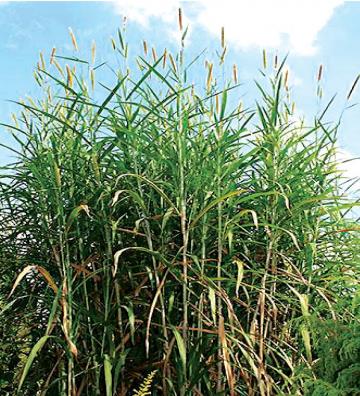
Napier grass (Pennisetum purpureum)
Local names: Pusa giant napier grass, Elephant grass
Napier grass requires warm and moist climate, clay to clay loam soil for good growth. It is a prolific yielder and has recently acquired a great popularity. The crop is sown from end of February to end of August in the northern India. But for getting the maximum return in terms of yield, the crop should be sown by the end of February, since late sowing may give only one cut till the end of November after which it remains in a dormant stage.
The first cut is ready after three months of plantation and thereafter every 50-60 days. The objective of green fodder is to at least provide a maintenance ration. A fodder which does not satisfy this condition cannot be recommended for adoption under any circumstances regardless of its yield. The Pusa giant napier has a fabulous yield, but the yield depends on the height of the plant at which it is harvested.
Nutritive value
For instance, if napier grass is harvested at 3.5 m height, the yield may be a little more but the fodder may be of little value to an animal nutrition because it does not constitute a maintenance ration and thus the very purpose of green fodder production is defated. To obtain satisfactory results this grass should not be fed alone but with legumes, concentrate or oil cakes. It contains 8-12% crude protein and 26-28% crude fiber. The total digestible nutrient ranges from 55-58%.
